
Sharing lessons learned to keep soil healthy, water clean and farms resilient.
Working Lands Farmers like Steve Carpenter, shown here cutting hay, are working together to implement farm practices that build soil health and improve water quality. © Patrick Flood Photography LLC
Get More Stories Like This
SIgn up for our monthly Nature News email!
One of the best things about living in Wisconsin is the food—from summer sweet corn to the delicious cheese made by Wisconsin cheesemakers using milk produced by Wisconsin dairy cows.
But with food demand expected to increase by more than 50% by 2050 as the world’s population grows, how will farmers meet that demand in Wisconsin and elsewhere?
And how can they grow the food we need while protecting the health of their soil and keeping our waters clean?
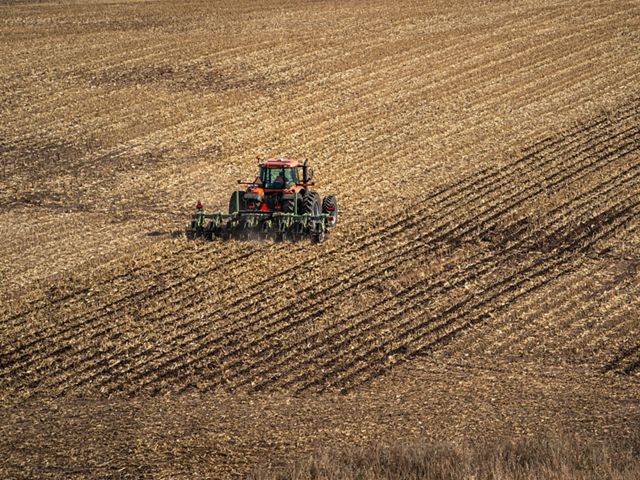
A small, but growing, number of Wisconsin farmers are working together to help find the answers. They have formed groups focused on their local watersheds and are implementing agricultural practices that build soil health and help improve water quality. Some of the practices they are using, such as cover crops and reduced tillage, will also help capture and hold carbon in the soil.
With support from Farmers for Sustainable Food, The Nature Conservancy and Wisconsin’s Producer-led Watershed Protection Grant Program, these farmers are sharing what they learn with each other and neighboring farmers, and they are setting goals and tracking conservation outcomes annually.
In the following profiles, you’ll meet five Wisconsin farmers who are leading the way on changing management practices. In doing so, they are not only protecting soil and water, but they are helping their farms remain resilient and profitable in the face of ever-changing conditions.
To learn more about each of the farmers, click on the tabs below. You can also hear from the farmers themselves in these interviews with Ricardo Silva, our agriculture strategies manager.

Steve Carpenter: Caring for Family, Community and the Land
For Steve Carpenter, a third-generation dairy farmer near Darlington in Lafayette County, it’s all about family—staying close, taking care of the land and passing those values on to the next generation.
“When Lisa and I started at Redrock View Farms in 1985, it was a small operation,” Steve comments. “We’ve been able to really grow it and bring our children in to farm with us, which is something we both wanted. Being able to work with them side-by-side every day, and now having our grandchildren around, brings us so much joy.”
Today, Steve, Lisa and their three sons, Cody, Colton and Carson, along with seven employees, milk 600 cows and farm 2,000 acres of corn, alfalfa and soybeans. Their daughter, Cora, graduated from Iowa State University in agricultural communications and is also pursuing a career in agriculture.
The family has always been involved in their community, participating and taking leadership roles in 4-H and FFA, the Lafayette County and state fairs and the annual county dairy breakfasts. But if you ask Steve what he’s most proud of, hands down it’s Day @ the Dairy, which he founded with three other dairy farms. Every fourth grader in Lafayette County is invited to visit the host farm to learn about and experience life on a dairy farm, from milking cows to tasting cheese and ice cream.
Quote: Steve Carpenter
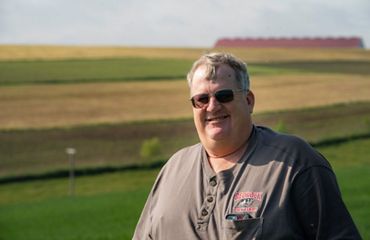
When Lisa and I started at Redrock View Farms in 1985, it was a small operation. We’ve been able to really grow it and bring our children in to farm with us . . . and now having our grandchildren around brings us so much joy.
Steve Carpenter
Redrock View FarmsForming a Farmer-led Group in Lafayette County
Steve has been a dairy farmer his entire life, starting as a boy milking cows at both his grandparents’ and parents’ farms. Like all farmers, he’s learned to deal with multiple challenges, from low milk prices and higher fuel and fertilizer costs to immigration policies and more extreme weather conditions.
In recent years, environmental issues, including water-quality protection, have become top of mind for Steve. In 2017, he and a handful of farmers in Lafayette County, led by Jim Winn, owner of Cottonwood Dairy in Wiota, came together to form the Lafayette Ag Stewardship Alliance (LASA). The purpose of the group is to work together to protect and improve their soil, water quality and environment by identifying, sharing and promoting conservation practices on their farms. Steve is the group’s vice-president.
Quote: Steve Richter
TNC is pleased to be able to support the efforts of Steve and other LASA farmers to find solutions that improve water quality and soil health and address climate change while sustaining their livelihoods.
Steve Richter
TNC’s Wisconsin agriculture strategy directorOne of LASA’s early actions was to participate in and help fund a study to test the water from hundreds of wells in Grant, Iowa and Lafayette counties to determine whether drinking water contamination issues exist, and if so, what is causing the contamination.
“We live in an area of the state with a lot of karst, and people in our county are worried about water quality,” says Steve. “Jim had been watching Yahara Pride Farms and Peninsula Pride Farms and the changes those farmers were making to their farming practices to improve their soil and protect their water. He invited me and a few other farmers to join him in forming our own group and taking a proactive approach to conservation.”
LASA started small with seven farms, but it has grown. Today, 35 farmers who raise 92,565 dairy cows, beef cattle and pigs and who farm about 59,300 acres are involved in the group.


LASA is supported by Farmers for Sustainable Food and The Nature Conservancy, who assist with outreach and event planning, helping farmers track the outcomes of their conservation practices and providing incentive funds to farmers who want to try new practices, such as cover crops and reduced tillage. The group also receives generous support from local and state businesses.
“Farming is very challenging, and TNC is pleased to be able to support the efforts of Steve and other LASA farmers to find solutions that improve water quality and soil health and address climate change while sustaining their livelihoods and Wisconsin’s dairy economy,” says Steve Richter, TNC’s Wisconsin agriculture strategy director.
Conservation at Redrock View Farms
Carpenter is quick to say that he’s new in his journey using cover crops, reduced tillage and other conservation practices. It’s not something his parents or grandparents did.
“I’m not where I want to be yet,” he says. “I’ve definitely had some challenges with no-till, for example, due to soil compaction. It doesn’t mean I can’t do it. I just need to try different ways to do it.”
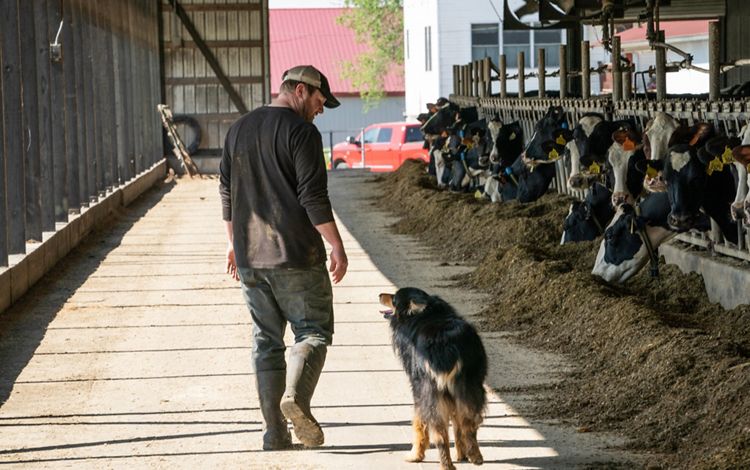
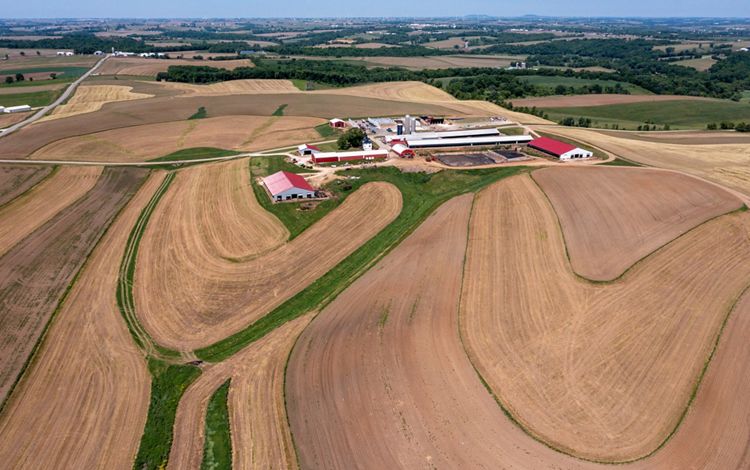
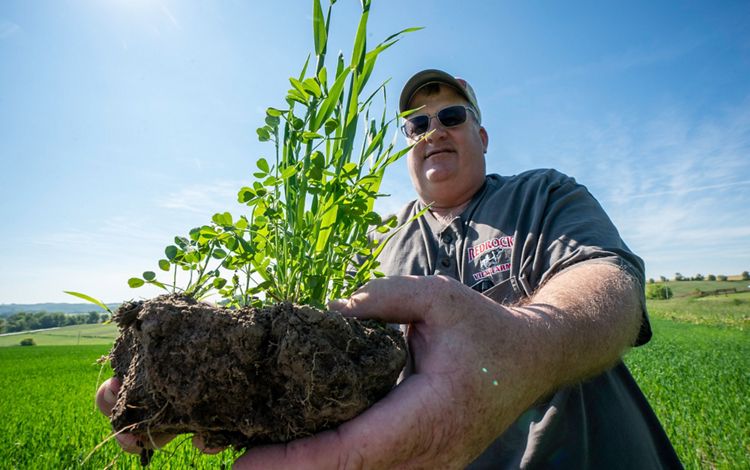



One of the things Steve is trying on the fields where he has compaction issues is vertical tillage. This type of tillage reduces disturbance to the soil by cutting into it vertically rather than pulling or dragging the blades through the soil. Most of the residue from the previous year’s crop is still in place after one pass through the field, reducing erosion and making it easier to plant the next season’s crop.
Steve is also using cover crops like barley on some fields and no-tilling into that. On other fields, he’s planting rye in the fall and then spreading manure onto it. The rye holds the soil in place, uses the nitrogen from the manure, adds organic matter and helps hold moisture in the soil.
Steve is also experimenting with nitrogen applications on his farm, matching the rate, timing and source of fertilizer to what the plants need. And he’s starting to see the benefits.
“I’ve been doing this for the past four years, and our yields have improved every year,” he comments.
Redrock View Farms
The Carpenter family, along with seven employees, milk 600 cows and farm 2,000 acres of corn, alfalfa and soybeans.
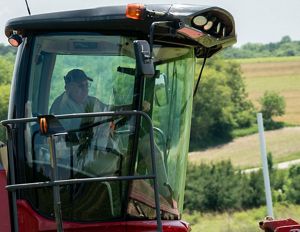
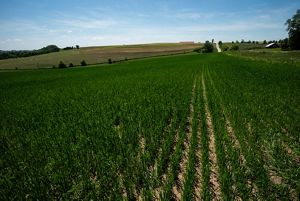
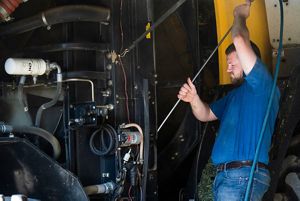
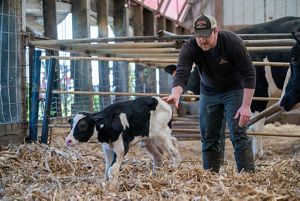
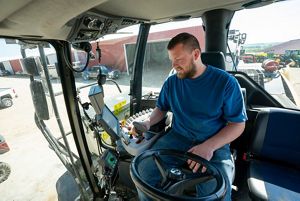
Finally, along with several other LASA members, Steve is participating in a five-year pilot study with Farmers for Sustainable Food, TNC, dairy processing and retail companies, and many other partners to create a framework that other farmers in Wisconsin and nationwide can use to establish conservation programs on their farms and document the environmental and economic impacts.
“The Carpenters and others in Steve’s group are setting an example through their commitment to trying new practices and measuring tangible effects,” Lauren Brey, managing director of Farmers for Sustainable Food, says. “Through this new framework, that example can be exported far beyond this one watershed. The goal is for widespread success throughout the supply chain, and we’re already seeing interest from farmers and partners elsewhere.”
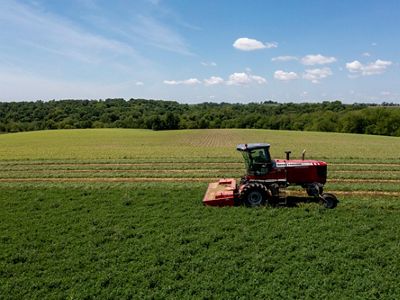
Learning from the Experiences of Others
Steve says the biggest benefit of LASA has been learning from other farmers.
“I learn something from other farmers at every LASA meeting and field day,” he says. “I see what people are trying, listen to how they’re doing it and learn from their successes and their mistakes.”
Spending time with family, giving back to his community and running Redrock View Farms keep Steve busy. If you ask him what motivates him to add LASA, the pilot study and utilizing conservation practices to his already full plate, he talks about the future.
“It’s about taking pride in and being good stewards of the land,” he says, “and passing that onto my kids. I want them to feel the same way I do about taking care of the land for their kids and grandkids.”
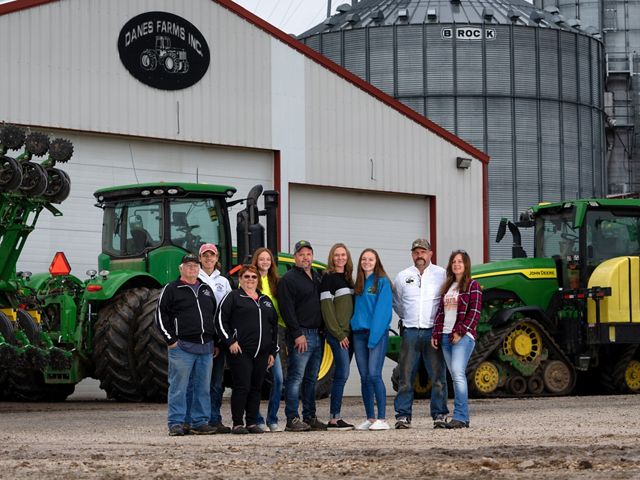
Bob Danes: Farm Conservation for Family Longevity
By Mary Hookham
Farming with family members and engaging the next generation are just a few of the good things happening in Bob Danes’ family on their New Holstein, Wisconsin crop farm. They also work hard to implement conservation practices to improve land and water stewardship.
“We want to leave the land in better shape than we found it for our next generation to enjoy,” says Danes. “Farming is a way of life that taught us lessons early. This is in our blood and DNA. Feeding America is a passion.”
Bob, his wife, Kelly, brother Mike, and Mike’s wife, Christina own and operate their cash crop farm, grain cleaning business and trucking enterprise. They farm about 3,900 acres and raise many crops, including rye grain and feed, corn and corn silage, soybeans, food-grade non-GMO soybeans, alfalfa, peas, green beans, sweet corn and lima beans.
As fourth-generation farmers, Bob and Mike are proud of their heritage that began in 1917 when their great-grandparents started the farm. Originally starting with dairy and crops, the family members dabble in other ventures these days, primarily to foster a love of farming in their young children.
“We want the next generation to have it if they want it, so we need to have conservation practices happening,” says Danes. “And we need to have things for the kids to do within the business.”
Quote: Bob Danes
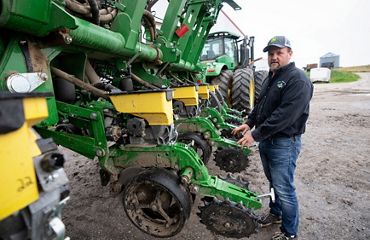
We want to leave the land in better shape than we found it for our next generation to enjoy.
Bob Danes
Danes FarmsStaying Connected through a Farmer-led Group
Danes has been a member of the Calumet County Ag Stewardship Alliance (CCASA) for the last two years. The young group is working to bring farmers, community members and allied professionals together to champion sustainable farming practices, a mission that fits perfectly into the Danes family lifestyle.
He really appreciates how the group brings his farming philosophy of “farm smarter, not harder” to life through the implementation of good environmental practices that truly make farming easier and more sustainable. Keeping up to date on the latest practices and ideas also makes him feel like his membership is valuable.
“There are often new rules for manure application or new equipment we can look at,” he says. “We partner with neighboring farms to buy their manure and spread it on our acreage, and we need to be current on the best ways to do that safely.”
Danes also enjoys the camaraderie of the group. Networking and hearing stories of practices that work or don’t work help him and his family decide what they can try next on their own farm.
Danes Farms
Danes Farms comprises a cash-crop farm, grain-cleaning business and trucking enterprise. The 3,900-acre farm grows rye, corn, soybeans, alfalfa, peas, green beans, sweet corn and lima beans.
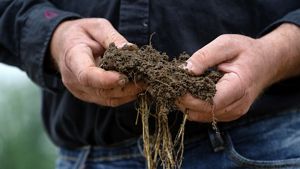
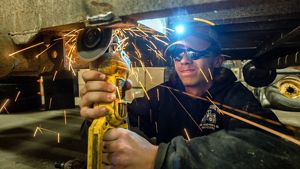
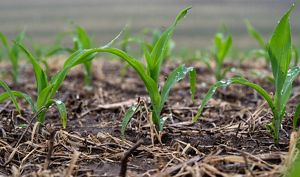
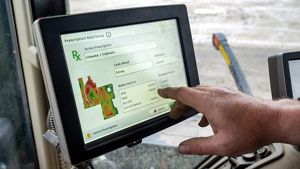

CCASA is a member of Farmers for Sustainable Food (FSF) a collaborative, industry-supported non-profit that promotes and supports farmer-led solutions to today’s environmental challenges. Among the services provided to the farmer-led groups, media training is one Danes really appreciates.
“The best part of being in the group so far is the media training,” he says. “I learned how to interact with members of the media to share facts about the work we’re doing and express how we’re improving the land and finding new ways to do things.”
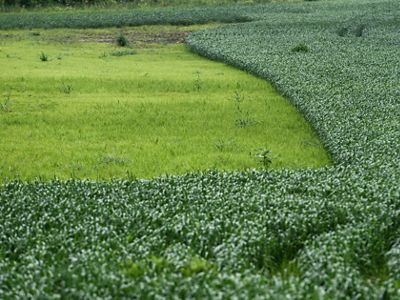
Learning from the group and sharing his experiences with members is a central focus for him, he says. Hosting a field day at his family farm in 2021 was a great way to invite fellow farmers in to see the work his family was doing while also learning about practices that were working for others. As he continues to learn more about farm management, he is grateful for the knowledge and experts available.
“This is all about money and managing resources,” he says. “By managing resources and taking advantage of options like variable-rate planters, we’ve seen a huge drop in inputs required and increases in production. This group helps us learn to do the right thing.”
Small Changes Equal Big Conservation
The Danes family began planting cover crops in 2012 and currently have about 2,000 acres planted in cover crops. Planting green—the practice of no-till planting conventional crops into living cover crops—is also now a common practice on the farm.
“With heavy rain, we were seeing a lot of soil washing away along with all the nutrients the plants need,” Danes says. “With these changes, we now see the soil staying in place.”
Conservation in Action
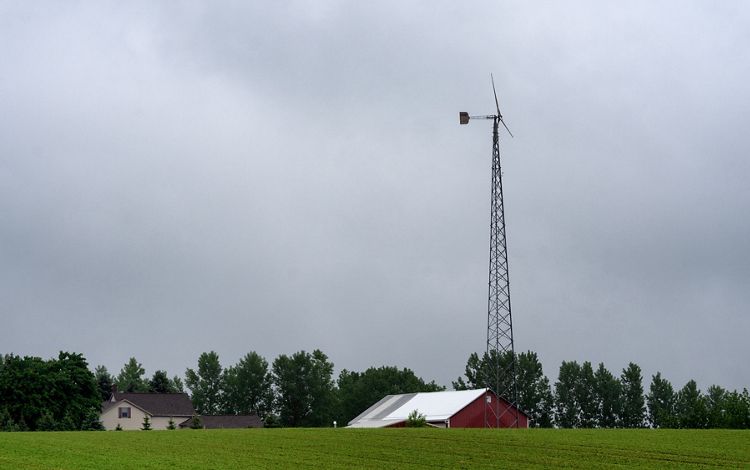
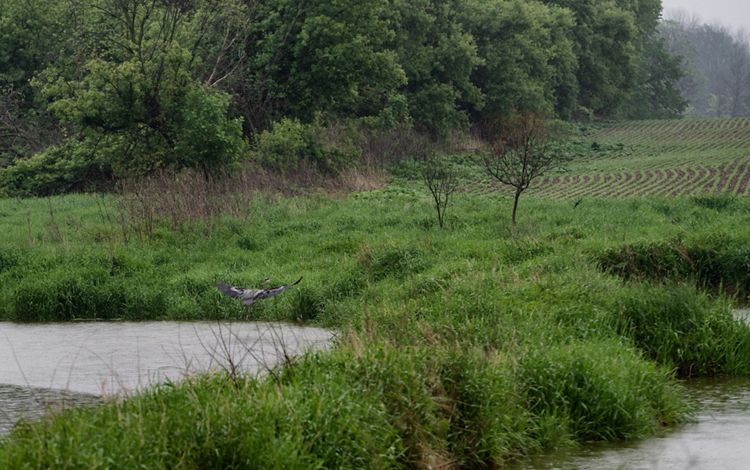
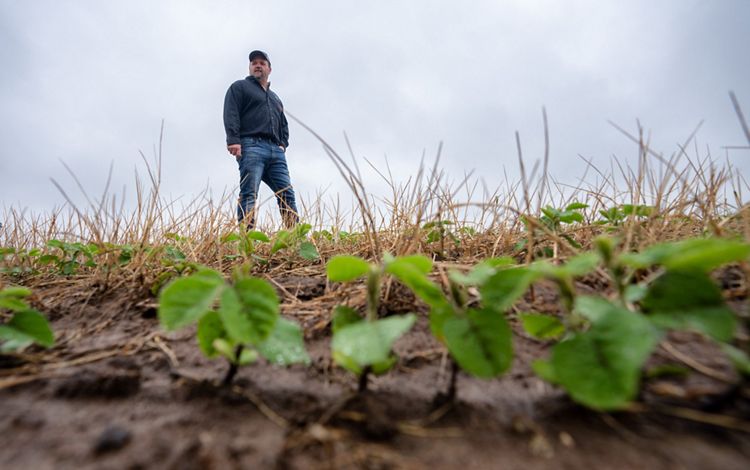
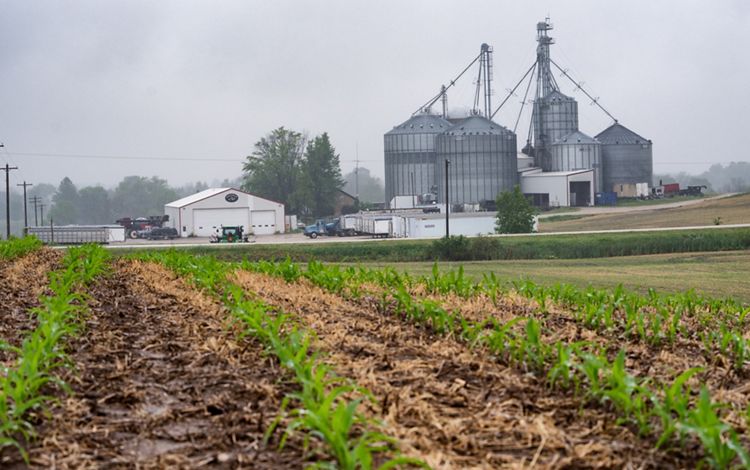




Other conservation practices include grass waterways, wildlife food plots, duck scrapes, and selectively cutting wood to create wildlife habitats. Danes says his family also filled in an old manure pit to help clean up the farm, and they’ve been soil sampling since 2005. Mike Danes has a wind turbine on his property that provides power for his hobby farm, and the family is researching options to install solar panels on the property.
In 2009, they began collecting yield data from their combines, which led to the creation of a new variable-rate planting and fertilizer program with Helena Agri-Enterprises in 2013. The plan is customized for their fields and helps them measure the amount of fertilizer they need so they can achieve higher production rates with fewer inputs.
“This plan is all about redistributing nutrients so the plants can use them more efficiently,” Danes says. “What we and other farmers nearby and farther away are doing on our land impacts the groundwater for so many others.”

The Guilette Family: Continually Improving on Conservation
If you talk to the Guilette family about farming for very long, you’re bound to hear the words “continuous improvement.” And that can mean one generation improving upon something done by the previous generation or the same farmer doing something better this year than last year.
“Farmers are, by nature, problem solvers,” says Nick Guilette. “Rather than take a wait-and-see approach, we try things to see what works and learn from our mistakes.”
Guilette Farms, near Casco in Kewaunee County, has been in the family for four generations. Allen and Debbie Guilette own and operate the farm. In recent years, their sons Aaron and Nick have begun taking over more of the day-to-day operations.
A hog farm at one time, today the Guilettes grow corn, soybeans and wheat on 300 acres. They also do custom combining, tilling and some planting on about 3,000 acres for other small farmers in the area.
Changes Bring Benefits
Guilette Farms has seen a lot of changes over the years. In Allen’s father’s day, tillage was done with a moldboard plow, where the soil was completely turned over. Allen replaced it with a chisel plow, which cut through the soil and stirred it up, causing less disturbance. Today, they are close to being 100% no-till across their 300 acres, planting their seeds without disturbing the soil and leaving the plant residue from the previous crop on the surface of the soil.
Allen and Debbie credit their son Nick, an agronomist and certified crop advisor, with leading the way on conservation practices, but they are all on board with the changes and the benefits they’re seeing.
Quote: Nick Guilette
Farmers are, by nature, problem solvers. Rather than take a wait-and-see approach, we try things to see what works and learn from our mistakes.
Nick Guilette
Guilette Farms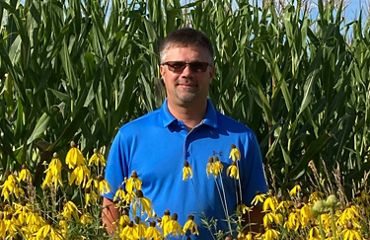
“With the no-tilling, our yields are the same as they were when we were doing the full tillage package,” says Aaron. “And I think they're slowly starting to improve. It takes a while to see the benefits, but I'm noticing with the no-tilling that it seems the moisture in the ground is the correct moisture, not overly saturated, but not bone dry. It maintains itself better.”
“When Allen and I first started farming here in the early '80s, we didn't see a lot of wildlife besides deer,” says Debbie. “Today, we have sandhill cranes out here, bald eagles sitting on their nests and turkeys. Some of that conservation tillage provides them with food, I guess, because you see them picking out the bits of corn left on the fields.”
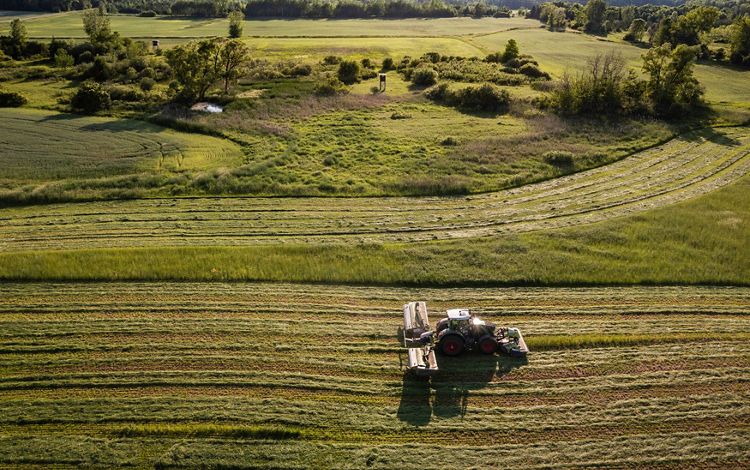
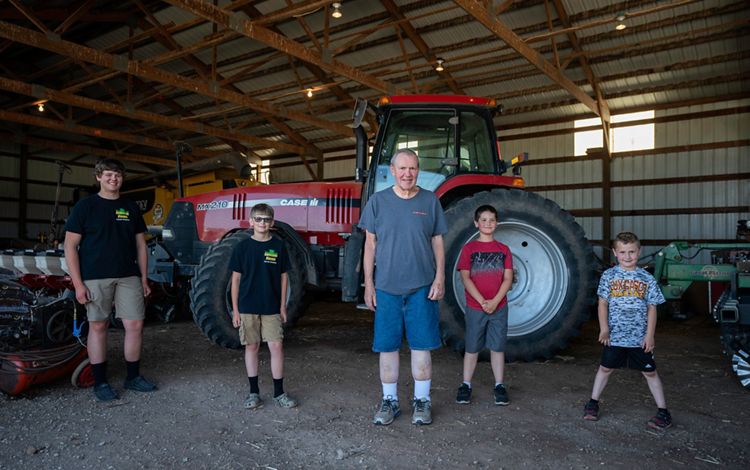

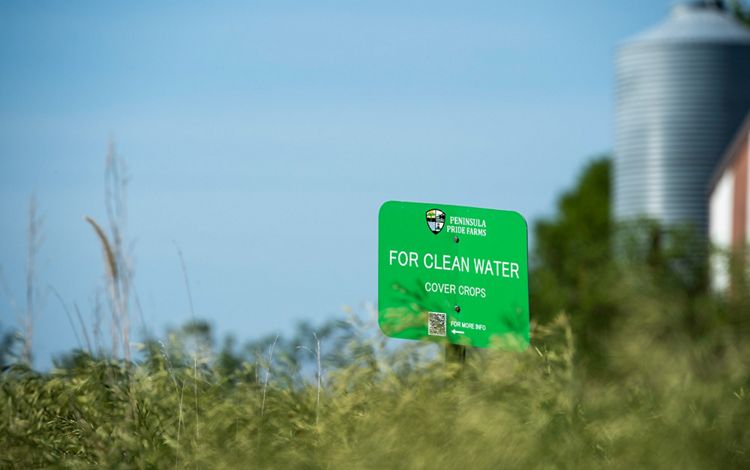
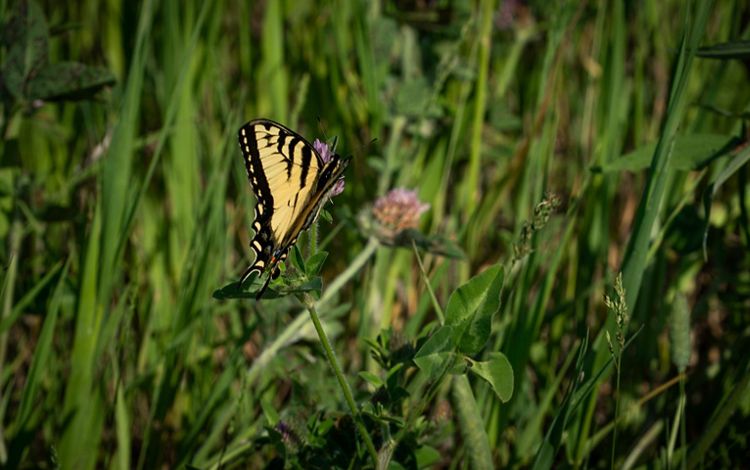





Unique Geology, Unique Challenges
One of the interesting things about the Guilette farm and others in the area, Nick notes, is their location on the Niagara Escarpment, the same bedrock feature that Niagara Falls spills over. He says it’s a privilege to have this unique geological feature in northeast Wisconsin, but it is also a challenge for farming.
Karst landscapes, like those in Kewaunee and neighboring Door County, have cracks and crevasses where anything applied to the land can quickly make its way into the groundwater. And it’s one of the reasons, Nick comments, that conservation practices are so important.
Nick is on the Board of Directors of Peninsula Pride Farms (PPF), a group formed in 2016 by farmers and businesses to address agriculture’s role in improving water quality in Kewaunee and southern Door counties. The group started small, but today there are 54 farmers, big and small, representing about half of the cows and tillable acres in the area.


Farmers in the group are experimenting with a variety of practices on their farm fields to improve the soil and protect surface waters and groundwater. In addition to reducing their tillage, they are planting cover crops to hold the soil in place and use up nitrogen, so it doesn’t run off or leach through the soil and end up in the water. They are applying smaller amounts of fertilizer to their fields more often, so the plants get just what they need, minimizing the amount of nitrogen left in the soil and making it less vulnerable to erosion.
Conservation Conversations Accelerate Learning
On the Guilette farm, in addition to no tilling. they are planting cover crops like radishes, barley and crimson and red clover. They are also using a newer technique called planting green where corn or soybeans are planted directly into a growing cover crop without killing the cover crop first. Some of the benefits are more organic matter in the soil, weed control and erosion control because living roots are in the ground longer.
Aaron and Nick say there’s been plenty of trial and error to get to where they are today. For example, no-tilling soybeans in the heavy, clay soils on their farm wasn’t easy to figure out, but they kept at it. And they freely admit there is always more to learn.
“Adoption of conservation practices is a continual journey,” says Nick. “Fifteen years ago, the thinking was that no-till doesn't work next to Lake Michigan in the heavy red soils here. So, it might seem like we're challenging years of tradition, but we're having success with it.”
Guilette Farms
For four generations, the Guilette family has farmed their 300 acres, following a model of continuous improvement, forming partnerships and sharing knowledge to ensure their business continues for generations to come.
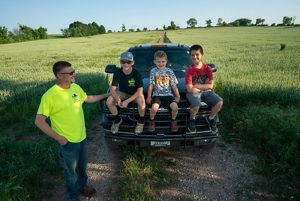
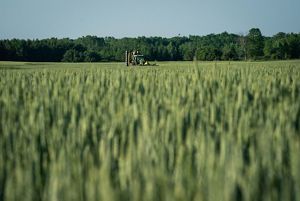
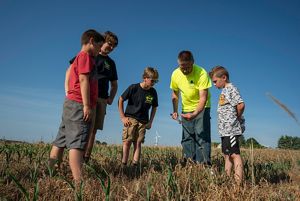
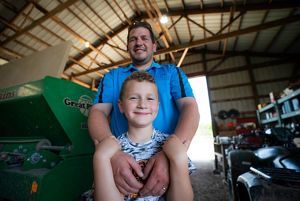
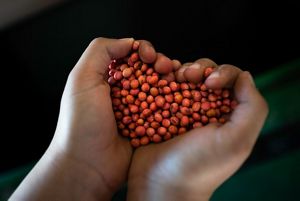
They say that learning from other farmers about their successes and challenges has helped. In 2020, PPF started hosting informal events known as Conservation Conversations. Members take turns hosting the conversations on their farms and cover a variety of topics from grass waterways and cover crops to planting green and low disturbance manure applications.
PPF is also a partner in the Door-Kewaunee Watershed Demonstration Farm Network, along with the Wisconsin Department of Agriculture, Trade and Consumer Protection and the USDA-Natural Resources Conservation Service. The four farms participating in the network test, demonstrate and share information about conservation practices and new technologies to improve soil health and reduce soil erosion. Nick is an advisor with the group.
“The Peninsula Pride and DK Demo Farm Network farmers are there to support each other and offer their ideas,” says Nick. “What we want to avoid is having a farmer try something that's a good practice, fail miserably at it and never want to try it again. And that's the power and the value of these farmer-led groups when they come together in a collaborative fashion.”
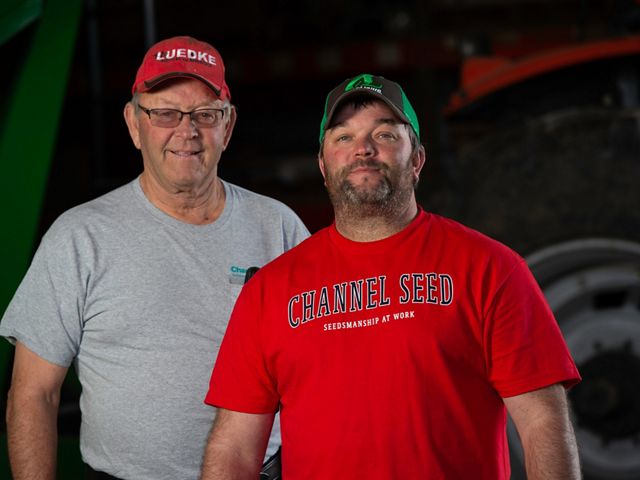
Travis Luedke: Third-Generation Farmer, Conservationist
By Mary Hookham
Caring for natural resources is in Travis Luedke’s blood. He learned the importance of land and water stewardship from his grandfather and father as he grew up on the family dairy-turned-crop farm just outside Plymouth, Wisconsin.
“Soil is a living, breathing entity,” Luedke said. “We try to be cautious about how we work with it.”
Today Luedke runs the 650-acre family farm with his parents, Warren and Linda, and his girlfriend, Jen. They raise corn, beans and winter wheat and have been no tilling for about 20 years. Three years ago, they began strip tilling, only plowing up narrow strips of their fields where seeds will be planted and leaving the areas between the rows undisturbed. They are also planting cover crops now.
The family tries to do most of the farm work themselves. Luedke’s other job working as a seed and fertilizer dealer for AgroLiquid Fertilizer, Channel Seed and Deer Creek Seeds allows him to be on the farm at key times of the year such as planting and harvesting. Family members work together to do the agronomist and mechanical work.
Networking and Growing through a Farmer-led Group
Luedke is a founding member and current treasurer of Sheboygan River Progressive Farmers (SRPF). The group is about five years old and continues its focus on cover crops and minimal tillage. Another aspect of the group is networking with other farmers to share stories and trial-and-error results, two priceless pieces of being a member of a farmer-led group for Luedke.
“Having this peer group to bounce ideas off of allows you to feel confident in trying new practices on the farm,” he said.
Quote: Travis Luedke

I have always taken a lot of interest in conservation and soil health, and this group is helping me try new things and share my story with other members.
Travis Luedke
Luedke FarmsLearning what real-life practices other area farmers are trying continues to be eye opening for Luedke. He appreciates the chance to listen to others and then assess what may or may not work on his own farm.
“This is not the same as reading about something in a book,” he said. “As you listen to others, your mind wanders to the possibility of trying some of these new things yourself and getting similar results.
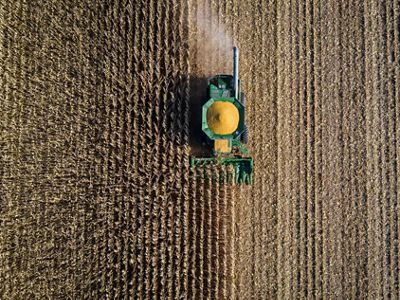
The farmers in the group are in the Sheboygan River Basin and struggle at times with a different climate compared to other parts of the state because of being so close to Lake Michigan, Luedke said. When the weather stays cooler in the spring, it’s tough to get a crop planted at the right time.
“Those of us closest to Lake Michigan deal with cold springs,” he said. “This can be difficult to work with when planting crops.”
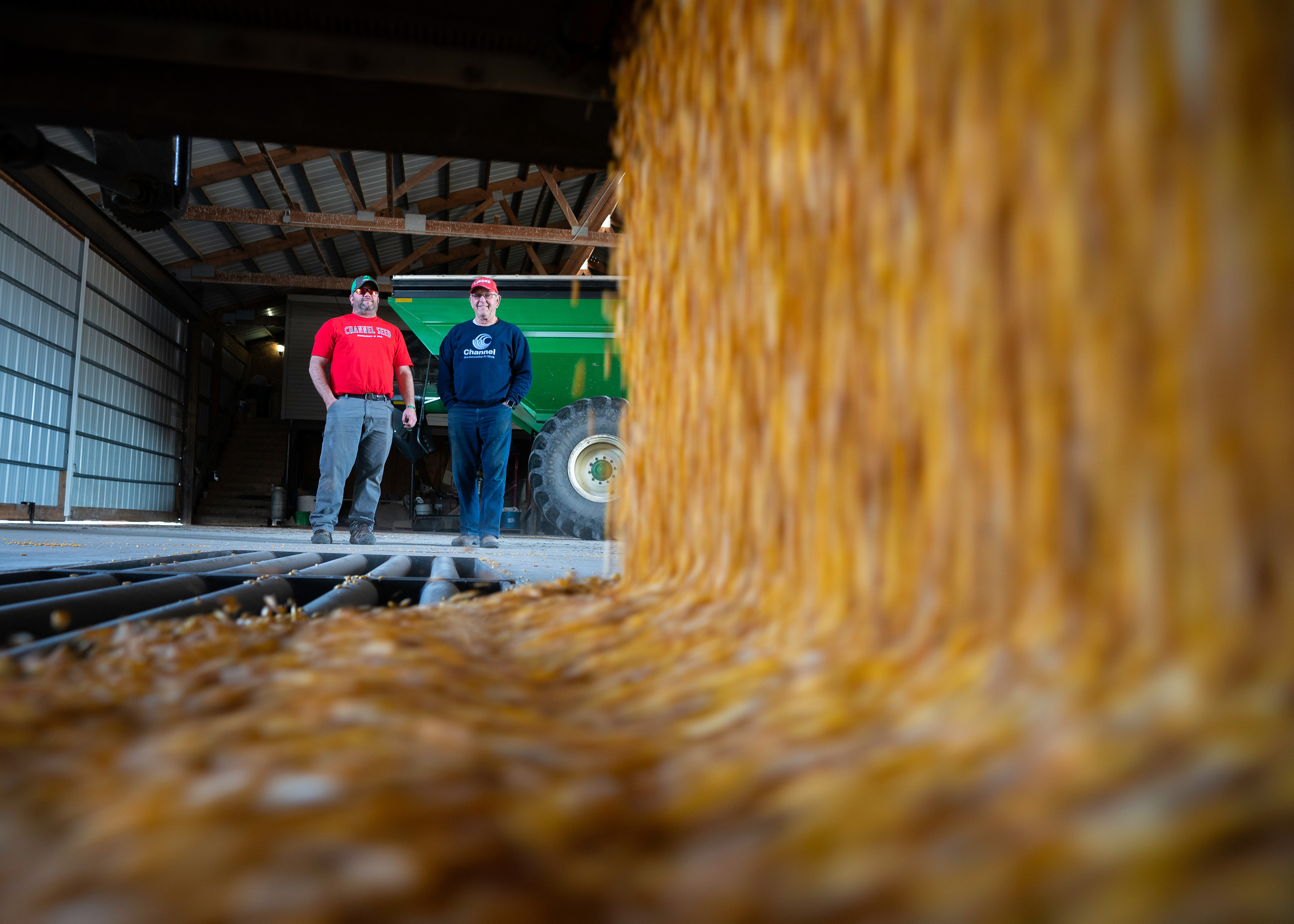
Sharing Stories
Talking to nearby farmers at meetings helps Luedke think through weather and planting issues, among others. Members look at new cover crop mixes and discuss what works well in their cooler climate close to Lake Michigan. He appreciates being able to be part of a group that encourages new ideas and practices on the farm.
“This group aligns well with my beliefs,” he said. “I have always taken a lot of interest in conservation and soil health, and this group is helping me try new things and share my story with other members.”
Sharing stories in farmer-led watershed groups is something Steve Richter of The Nature Conservancy knows is valuable both for farmer members and the public.
“It’s so important to have stories and photos to share,” Richter said. “Travis conveys key messages and farm stories in a really positive, lighthearted way. This is how he encourages others to open up about what they’re doing.”
Farmers for Sustainable Food and The Nature Conservancy support SRPF. These agencies assist with media relations and planning events, like field days and meetings. They also help farmer members track their conservation practices as well as provide financial incentives to farmers interested in trying new practices on their farms.
Building Relationships, Being a Leader
Recently Luedke served as the moderator for the SRPF’s annual meeting. He’s held the group’s treasurer post for one year, and he continues to host group field days on his family farm. Stepping up to the plate to be a leader in the group and in his community are characteristics Richter admires in Luedke.
“I appreciate his willingness to play a leadership role and do it in a way that's very positive and engaging,” he said. “Travis develops real friendships amongst the farmers, something I know really builds confidence and trust. Those farmers then have that connection, and it helps them try new things.”
Luedke understands how important it is to put new practices in place on his farm not only to learn more for himself and his family but also to then speak up during group meetings and share that knowledge with his neighbors. Strip tilling is a great example of this.
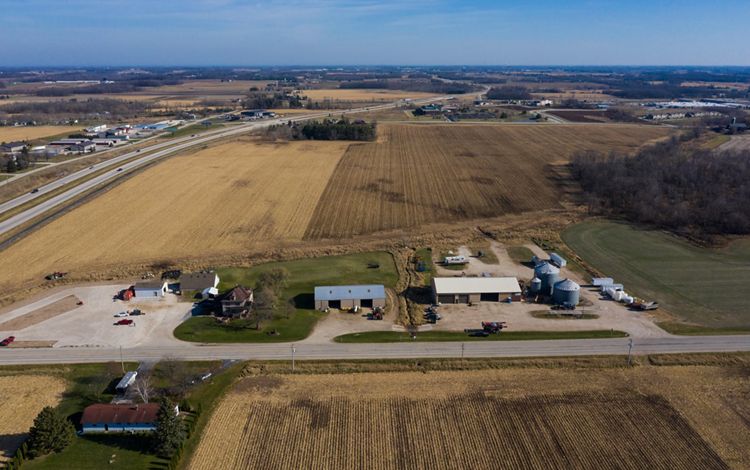

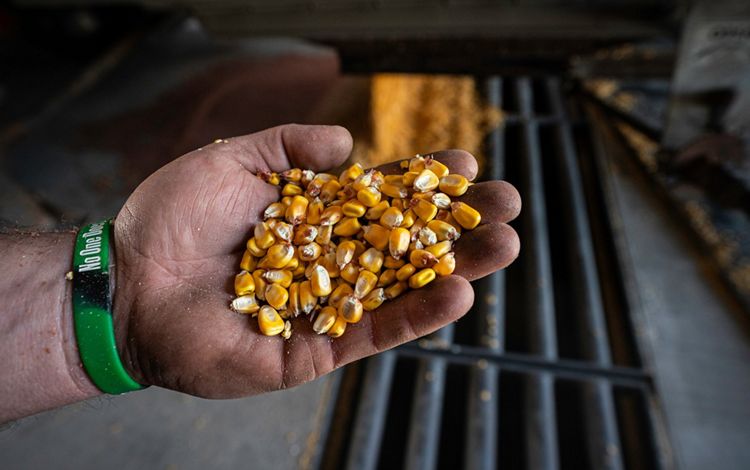



“This is a process of tilling and fertilizing only where the seed is put in,” he said. “It keeps the seed and fertilizer exactly where it needs to be, and by doing this, we can grow a better crop using less fertilizer.”
Luedke first started strip tilling after he hosted a field day showcasing a diverse cover crop mix and demonstrations by multiple strip till manufacturers. Part of the field day also involved sharing information about cover crop root depth using a root pit.
After that field day, Luedke was convinced that strip tilling was a practice he should try on his own farm, so he purchased a strip till machine later that year.
“Travis knows and talks about the value of edge-of-field practices, such as grass buffer strips planted between crop fields and streams, which trap sediment and nutrients and keep them from reaching the water,” Richter says. “He knows the value these practices play environmentally as well as the economics behind them.”
Luedke Farm
Third-generation farmer Travis Luedke and his family run Luedke Farm, pairing smart farming practices and conservation action to better his business and the planet.
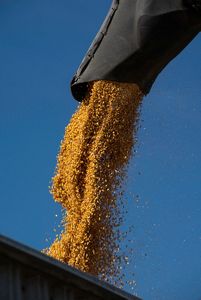
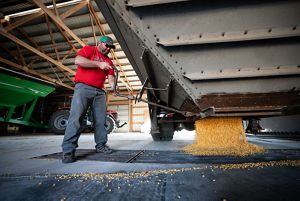
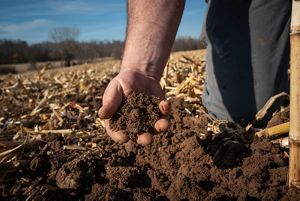
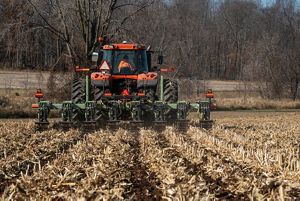
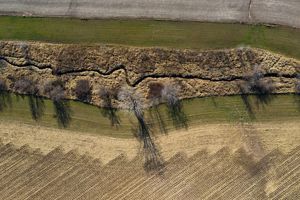
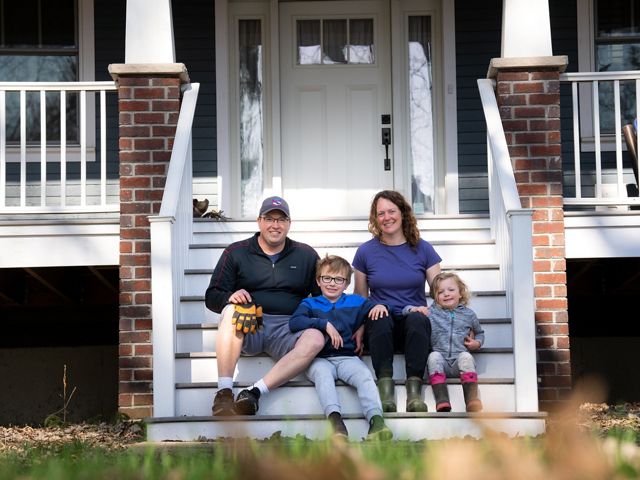
Leslie Svacina: Becoming One with Nature
By Mary Hookham
Working harmoniously alongside nature rather than against it is at the heart of the farming operations at Cylon Rolling Acres near Deer Park, Wisconsin. From livestock grazing to pasture mix diversity and springtime kidding season, being one with the environment is second nature to Leslie Svacina.
“Why fight nature when we can work with it?” she says. “This farming philosophy is at the core of what we do on our farm.”
Svacina and her husband, Scott, officially started farming in 2011, when they purchased the farm they operate today with their two young children. But her passion for agriculture began back in high school when she took ag classes and was active in her local FFA chapter.
“My love for agriculture grew from there,” she says.
Today Cylon Rolling Acres covers 140 acres and is home to a herd of up to 200 meat goats, depending on the season, and a small flock of sheep. The Svacinas spent the first two years of farm ownership repairing existing buildings and installing livestock fencing. In 2013, they brought home Boer goats and began crossbreeding with Kiko goats soon after because of that breed’s hardiness, growth rate and ability to feed on a forage-based diet.
Gaining Resources in a Farmer-led Group
Svacina is a member of the Western Wisconsin Conservation Council (WWCC). She views the group as a great resource for farmers in her area to learn more about conservation practices from fellow farmers and experts.
The group is crucial in helping farmers try new practices on their farms through cost-share programs and see those practices firsthand at field days. It’s about helping farmers learn what works for their operations, she says.
Quote: Leslie Svacina
We don’t think of conservation as a checkbox for the farm. For us, it’s about continuing to improve our land and making it better, not just for our farming practices but for the ecosystem above and below the ground.
Leslie Svacina
Cylon Rolling Acres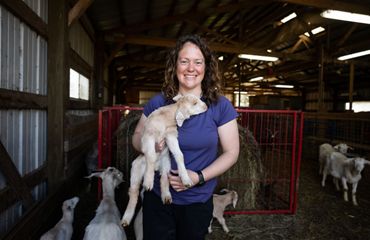
Svacina’s experiences with the group have been beneficial, she noted. Learning about different conservation practices and having the chance to see how other farmers implement them tops her list of member benefits. Even though much of the content within the group has a crop-centered focus, she says it’s still valuable for her as a grazier, because she’s able to take away ideas of how to approach or incorporate new practices, like using no-till and cover crops, when it comes to pasture and hay field improvement.
“I think no matter how you farm, what you farm or where you're at in your conservation practice journey, it's important to always learn and improve upon what you're doing,” she says. “It can be little steps over time that can build to make a big difference.”
Svacina considers herself a lifelong learner and has come to rely on the group for resources on new approaches to conservation practices on her farm. She especially appreciates the group’s use of experts and available university research but feels the ability to learn and see conservation from a local perspective is extremely valuable. This ultimately makes the practices showcased in the group seem possible and adaptable to each individual farm.
“Seeing conservation in practice, especially with peers locally, is really impactful,” she says.
Conservation Farming
The Svacinas use sustainable practices to ensure the longevity and health of their farm.
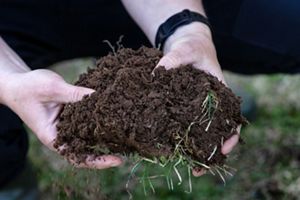
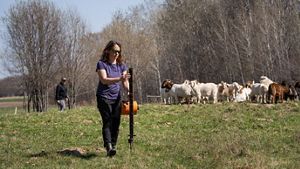
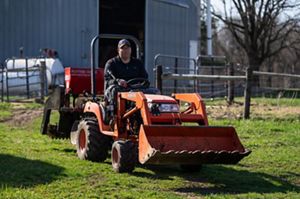
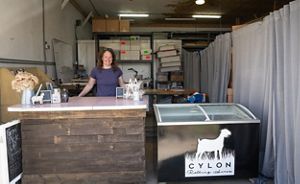
For Svacina, conservation is about preserving natural resources as a keeper of the land—more specifically, preserving soil and water. In agriculture, conservation is necessary for farmers to continue growing crops and raising livestock—things that can’t happen if the natural resources on farms aren’t in good condition.
“It starts with the soil,” she says. “Continuing to build and improve the health of the soil is essential for this to happen. These actions also impact the ecosystem beyond our farm, including the quality of our watershed, wildlife, beneficial insects and other factors.”
Cylon Rolling Acres Conservation
Svacina utilizes rotational grazing with her livestock. Under this managed grazing conservation method, the herd is moved to new pasture paddocks every few days, which is a way to follow the migration and grazing patterns of bison decades ago. The plants are either eaten or trampled during each rotation, and as the livestock bite the plants, they encourage plant regrowth. The trampled plants add cover to the soil surface and organic matter as they break down. Goat manure and urine provide fertilizer for the soil, which then feeds the soil microbes.
“We don’t think of conservation as a checkbox for the farm,” Svacina says. “For us, it’s about continuing to improve our land and making it better, not just for our farming practices but for the ecosystem above and below the ground.”
Cylon Rolling Acres
Leslie Svacina and her family work in harmony with nature so that her farm, her family and the environment can thrive.

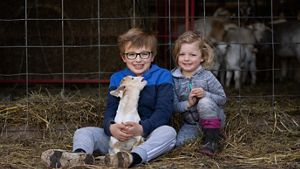
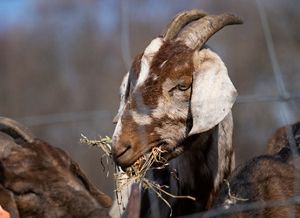
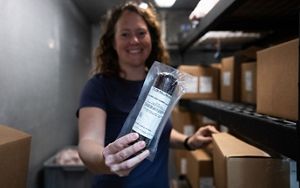
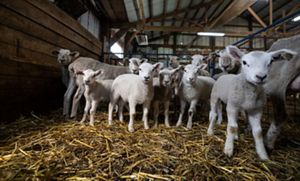
Svacina plants perennial pastures and hay for winter feeding to help reduce tillage. No-till and reduced till are important concepts on the farm, and Svacina recently purchased a no-till drill for planting after renting one when she needed to plant.
“This will give us greater flexibility in how we interseed our pastures and renovate pasture in the oak savanna, as well as seed hay,” she says.
She also takes advantage of strategic bale grazing—the practice of feeding round hay bales intentionally on pasture throughout the winter, allowing her to improve those parts of the pasture where the hay is fed. The goats leave behind hay residue, seed heads and fertilizer to give the soil a nutrient boost.
Quote: Leslie Svacina
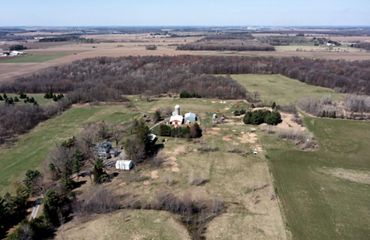
Why fight nature when we can work with it? This farming philosophy is at the core of what we do on our farm.
Leslie Svacina
Cylon Rolling AcresRestoring an old grove of oak trees that was once pasture on the property adds to the conservation practices at Cylon Rolling Acres. This area is full of overgrowth—mostly buckthorn—that’s choking out the trees and prairie grasses. Svacina is working to renovate the area to remove invasive species and re-establish grasses.
“Once complete, we will use managed grazing in this area to maintain it, much like the bison and other wildlife did long ago with their migratory grazing,” she says. “Without animals on the land—even wildlife—these invasives have taken over.”
All photos © Patrick Flood Photography LLC
We Can’t Save Nature Without You
Sign up to receive monthly conservation news and updates from Wisconsin. Get a preview of Wisconsin's Nature News email.
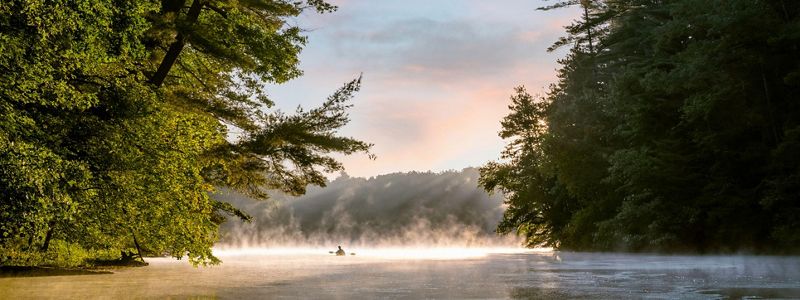
Related articles
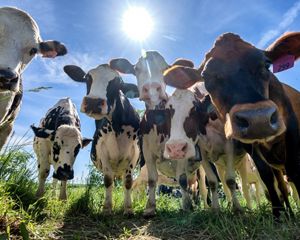
Dairy Industry Aims for GHG Neutrality
Nature Conservancy scientists have developed a Roadmap for a Sustainable Dairy System to help the dairy supply chain meet sustainability and environmental goals.
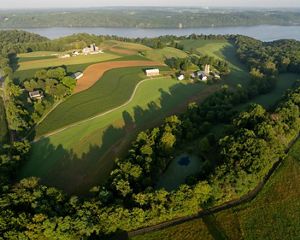
Agriculture Innovation
Accelerating market transformation through purposeful innovation.
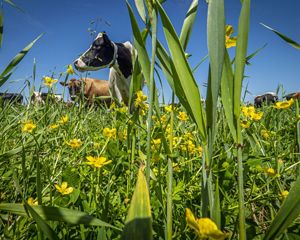
Planning Is Key to Effective Management of Nutrients on Dairy Farms
Putting a nutrient management plan (NMP) into place, and following it, is the first step toward improving nutrient management on farms.